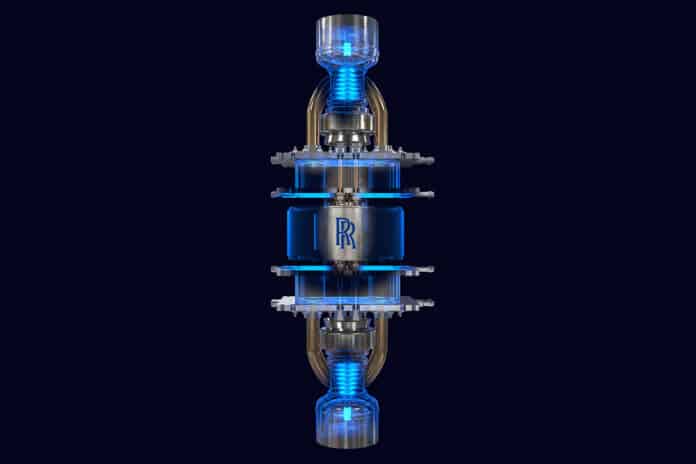Nuclear propulsion systems for space exploration are expected to offer significant advantages. As a self-contained and power-dense solution, a micro-reactor can provide power for the exploration of a planetary surface or for the power and propulsion of spacecraft.
As experts in innovation with over 60 years of expertise in nuclear power, Rolls-Royce launched a Micro-Reactor concept for space exploration in 2021, with plans for a first-of-its-kind model ready by 2029.
In a recent tweet, the British multinational auto and aerospace company provided a teaser of what their Micro-Reactor will look like. The Micro-Reactor “is designed to use an inherently safe and extremely robust fuel form. Each uranium particle is encapsulated in multiple protective layers that act as a containment system, allowing it to withstand extreme conditions.”
With support from the UK Space Agency alongside other interested parties, the company is working to bring the micro-reactor technology to life, with power ranges from watts to megawatts and future applications in terrestrial markets. In addition to the micro-reactor technology, the company continues to explore and develop future nuclear power options to enable expanded mission capabilities in the space domain, including sustained human presence on the moon and beyond.
“As we build back better from the pandemic, it is partnerships like this between business, industry, and government that will help to create jobs and bring forward pioneering innovations that will advance UK spaceflight,” said Amanda Solloway, MP Parliamentary Under Secretary of State (Minister for Science, Research and Innovation).
“Nuclear power presents transformative possibilities for space exploration, and the innovative study we are conducting with Rolls-Royce on this could help to propel our next generation of astronauts into space faster and for longer, significantly increasing our knowledge of the universe.”
Scientists and large organizations around the world are increasingly looking at nuclear fission for space. Last month, NASA and DARPA announced plans to build a nuclear thermal rocket engine (NTR) by 2027 for the space agency’s future long-duration spaceflight missions.
